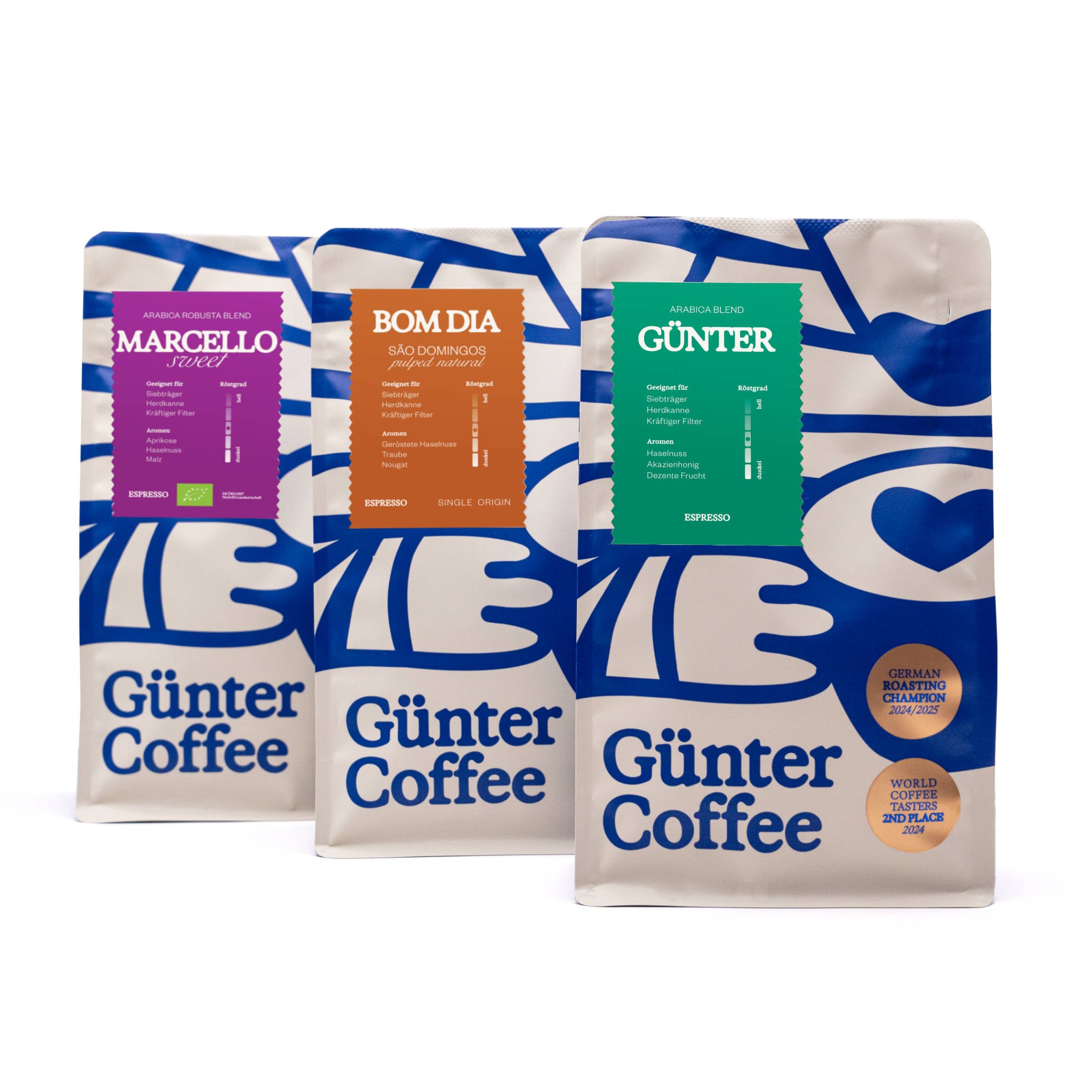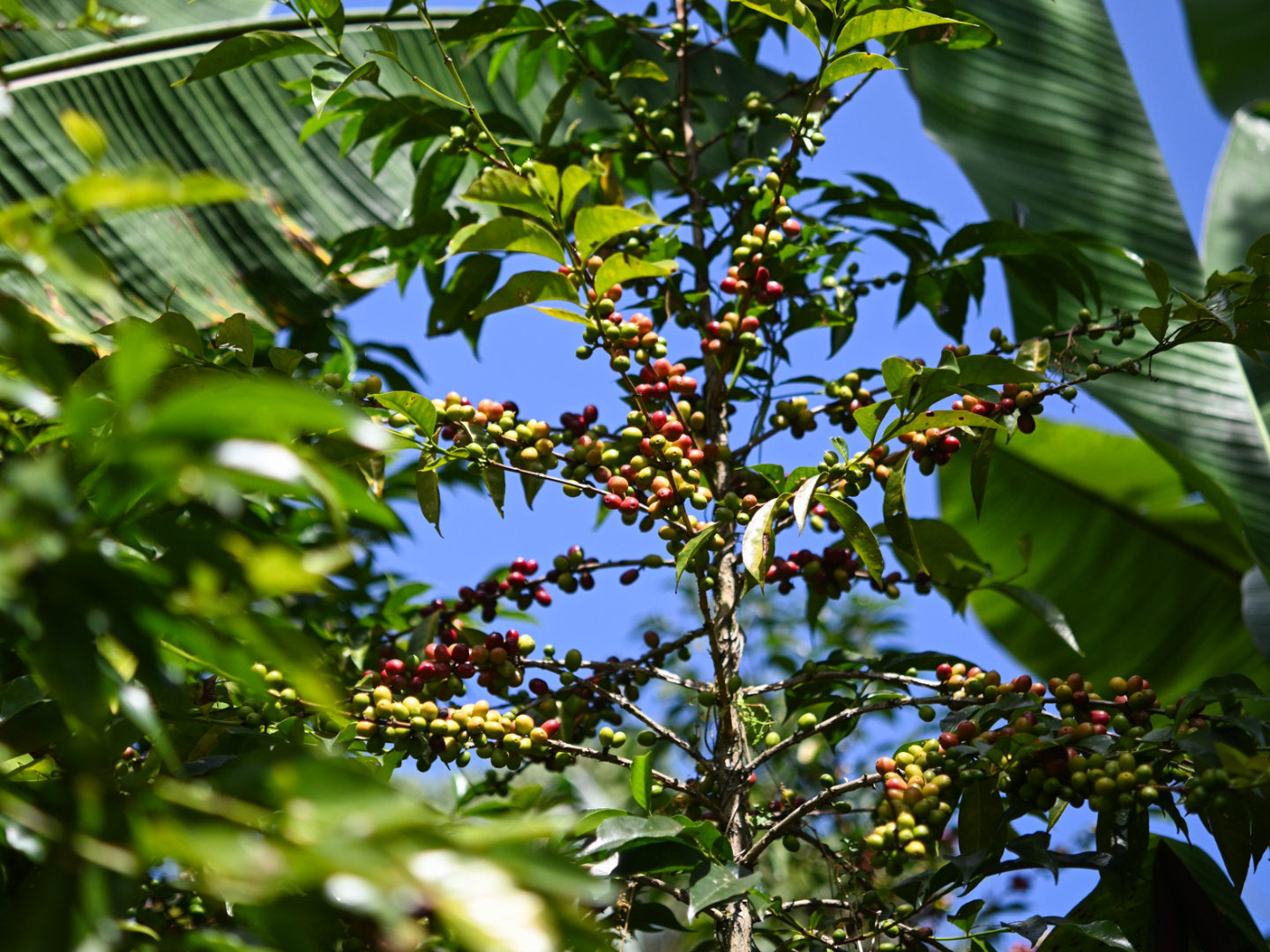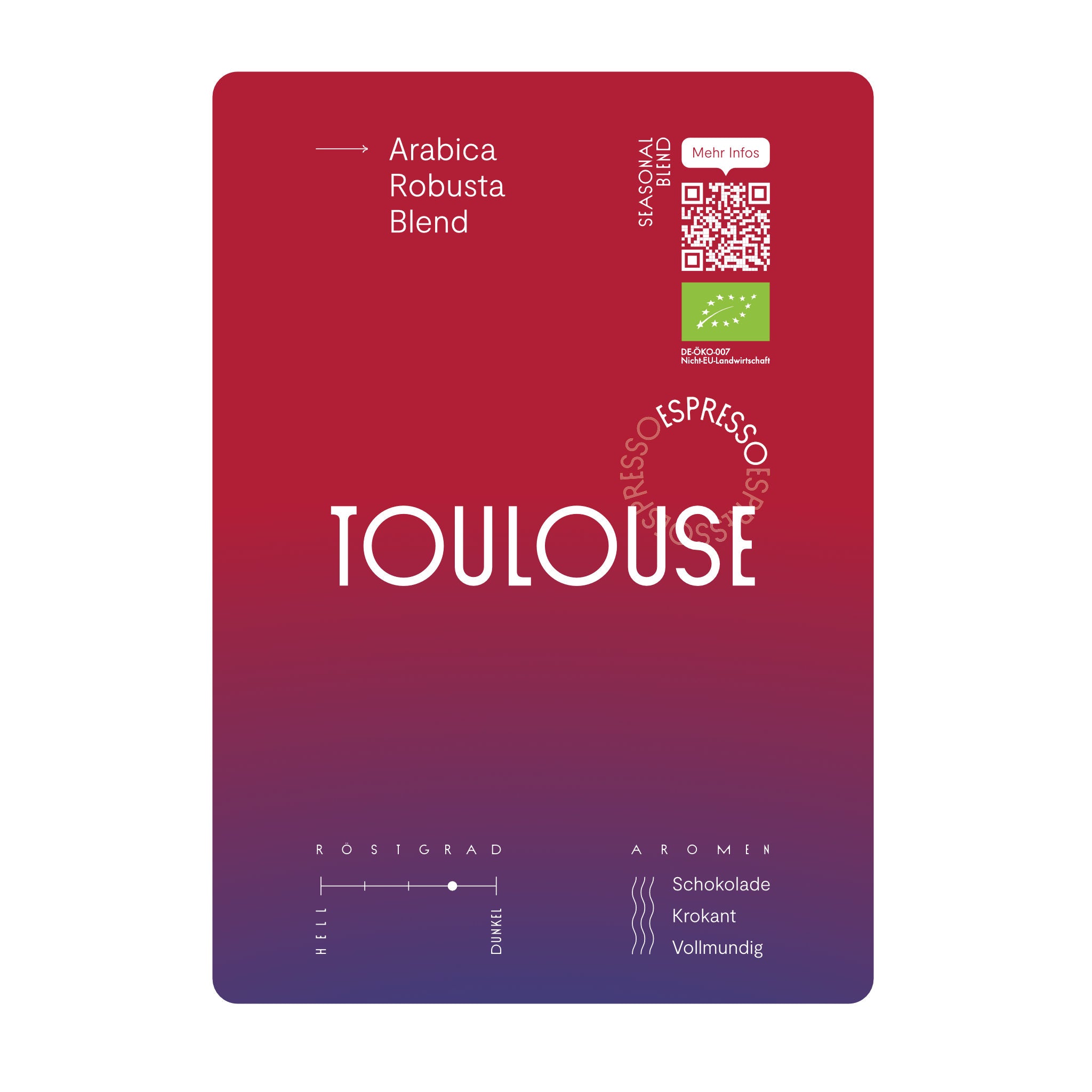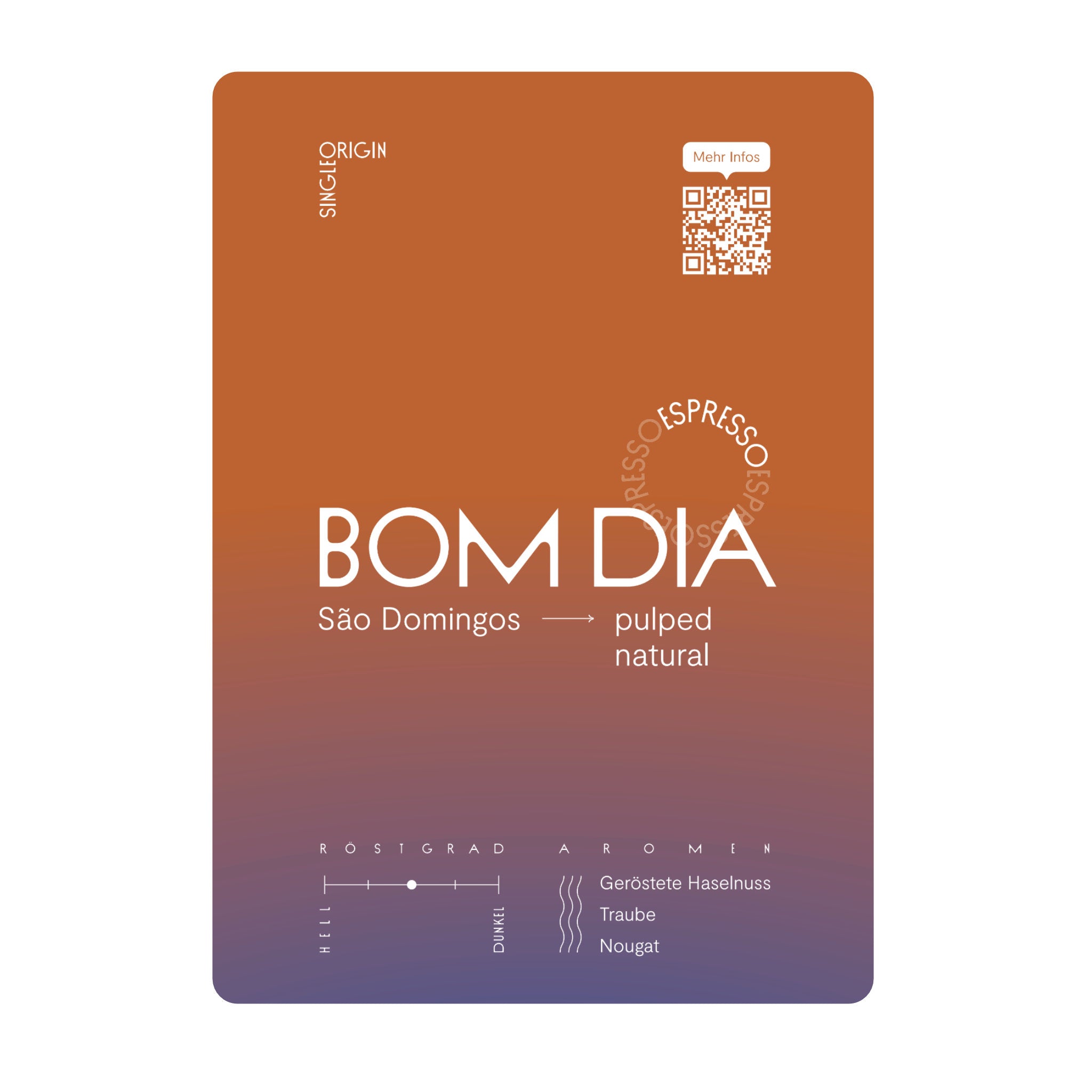The area with the ideal growing conditions for coffee stretches around the globe like a belt. The area called the Coffee Belt extends from latitude 23 north to latitude 25 south along the equator.
Here there are ideal climatic conditions for the coffee plant, of which there are over 120 known species. With a total share of ~99%, the cultivation of Arabica and Robusta represents the overwhelming majority. The lower-caffeine Coffea liberica (Liberica coffee) is currently on the rise, but currently only accounts for around 1% of coffee cultivation.

World map with the coffee belt drawn in, which encloses large parts of Central America, Africa and Asia. We currently source our coffee from the countries shown.
Arabica and Robusta coffee are the most common
The most common types of coffee are Arabica and Robusta. Coffea arabica accounts for around 60% and Coffea canephora (Robusta) for around 40% of global cultivation.
The plants grow as shrubs or trees and are evergreen. This means that they do not lose their beech-like leaves. In complete contrast to the beech and the other deciduous trees that one encounters in European regions. However, the coffee plants in the typical growing countries such as Brazil, Vietnam, Colombia, Indonesia, Ethiopia and many more are generally not exposed to cold temperatures or snow.
No. Many coffee lovers think that the designation “100% Arabica” represents a special quality feature. That's a misconception.
It is true, however, that Arabica varieties have more natural aromas. But with heavily roasted coffee (often referred to as 'Italian') this hardly matters. Long roasting times and hot temperatures lead to the roasting aromas overpower all other aromas. Robusta offers more caffeine and is popular in espresso blends because of its more pronounced crema. The quality, however, comes down to sorting after harvest, which means that there is good and bad quality Arabica as well as Robusta.
What to know about Coffea Arabica

Coffee blossom of a coffee plant of the species Coffea arabica. Photo by Nikolai Fürst.
The Arabica species originally comes from Ethiopia. Today it is grown everywhere along the coffee belt. Since the plants grow around 12 meters tall in the wild, farmers repeatedly trim them to a height of ~2 meters. This makes it easier to control the yield and makes inspection and harvesting easier.
It takes between two and four years from seed to the first snow-white blossom. However, Caffea arabica remains productive for around 30 years and requires around six to nine months for subsequent harvest cycles.
When it is in bloom, there is a sweet scent in the air that is reminiscent of jasmine. However, the beautiful flowers don't last long. When they fall off, the so-called coffee cherry slowly grows, which first shimmers green, then yellow and finally red. The red tone when harvest is ripe is present at least in most varieties that do not have the word yellow in their name. The latter remain yellowish. The coffee beans (seeds) grow in the stone fruit.
What to know about Robusta
Robusta coffee, also known as Coffea canephora, originates from West Africa as well and also has white flowers. At nine to eleven months, it takes a little longer for the flower to become a ripe coffee cherry. However, the plant is significantly more productive and, among other things, more pest-resistant due to the higher caffeine content.
While a cultivated Arabica coffee plant produces up to 5 kg of coffee cherries, the Robusta plant produces up to 10 kg. The coffee beans differ visually primarily in their shape. Arabica is characterized by a more elongated, oval shape and an S-shaped cut in the middle, while Robusta is more rounded and has a straight cut.
The largest export countries for Robusta are Vietnam, Brazil and Indonesia.
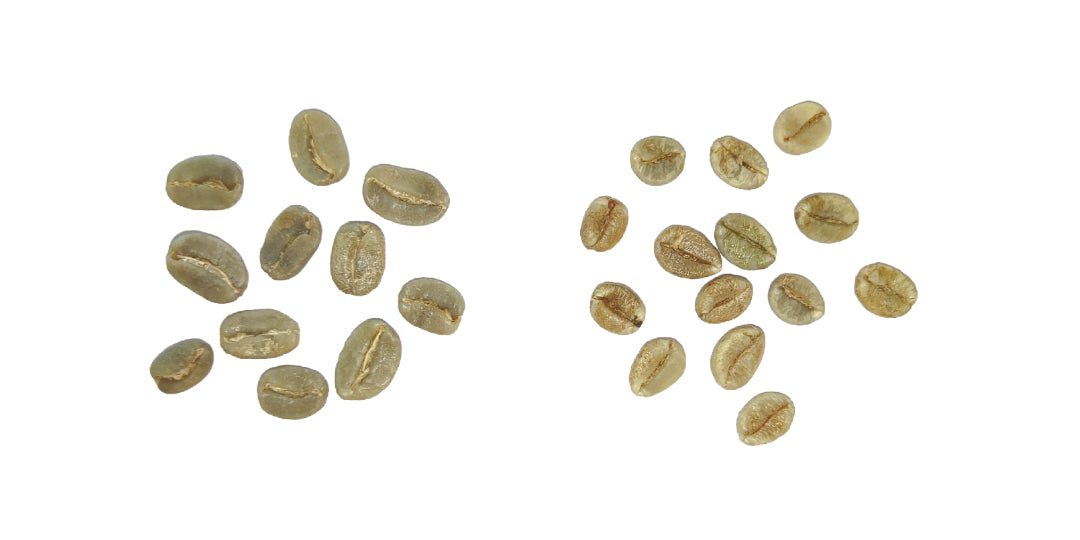
A comparison of Arabica (left) and Robusta (right) coffee beans.
The ideal climate for coffee plants is tropical
The coffee plant feels most comfortable in tropical climates. The most commonly cultivated type, Arabica coffee, grows at altitudes of around 800 to 3000 meters. To encounter the second most common type of Robusta coffee, you don't have to go that high. Some of the plants can be found even in coastal areas.

Colombia Tabi coffee plants in the tropical climate of the Tolima region, Colombia. Photo by Nikolai Fürst.
The average annual temperature in Tolima, Colombia, for example, is a pleasant 23°C. The coffee cherries for our award-winning filter coffee Colombia Tabi (Coffea arabica; now sold out) grow here at approx. 1750 m. It rarely gets colder than 18° C and it doesn't get much warmer than 28° C either.
This fits well, because the temperature spectrum for the best yield for Arabica is between 15° and 34° C. For Robusta, the ideal temperature window is somewhat narrower: it feels most comfortable between 24° and 30° C, although otherwise - As the name suggests – it is more robust than Arabica.
As soon as frost occurs, the coffee plants suffer significant damage from which they may never recover. Our coffee plant in the roastery in Freiburg, Germany, is therefore always indoors. If you have your eye on a coffee plant as a houseplant, we recommend you do the same - at least for the cold season when there is a risk of frost.
Growing coffee: from seedling to harvest
New coffee plants grow from the seeds, which are better known to us as coffee beans. Roasted beans are not suitable for sowing. We need green, untreated coffee beans that were harvested as recently as possible.
First we soak the seeds in water for a day (24 hours) and then put them in a mixture of potting soil and e.g. sand and a mineral substrate to transplant. It is important that there is no waterlogging. Although the seedling needs water every day, the soil should be permeable so that excess water can drain away.
As the coffee plant grows, the remains of the coffee bean become airborne until they eventually fall off. When repotting or planting, it is important to know that the roots of the coffee plant grow very far into the soil.
Depending on whether you use Arabica or Robusta seeds, pollination is necessary. While Arabica is self-pollinating, Robusta is cross-pollinating. This means that the latter type of Caffea canephora relies on cross-pollination by animals, insects, wind, water or people so that coffee cherries can grow after the flowers. It can take up to five years for a coffee plant to produce its first cherries.
Growing coffee summarized
- The species Caffea arabica and Caffea canephora (Robusta) are most commonly grown.
- Brazil, Vietnam, Colombia, Indonesia and Ethiopia grow the most coffee (in order from much to less).
- Arabica is grown between 800 and 3000 meters above sea level. M. grown, Robusta at 0 and 1000.
- The coffee plant feels most comfortable in tropical climates .
- Coffee plants are evergreen and susceptible to frost and snow.
Would you like more coffee knowledge? In our article What is Specialty Coffee you can find out everything about the differences in quality of coffee. Do you already know them? Here we describe how coffee is harvested . You can find out what happens afterwards during “processing” in our article on coffee preparation.
